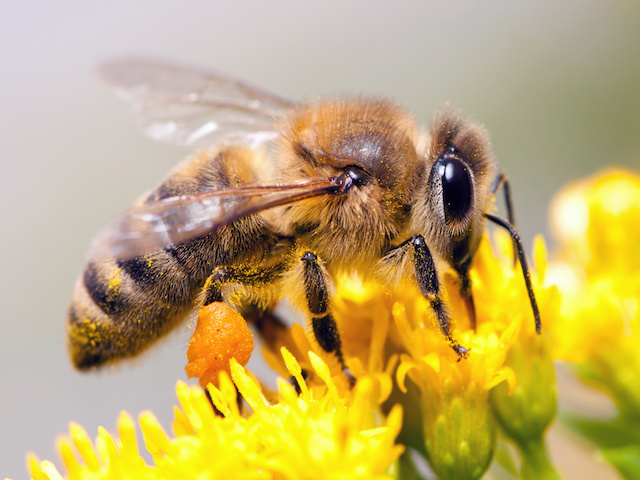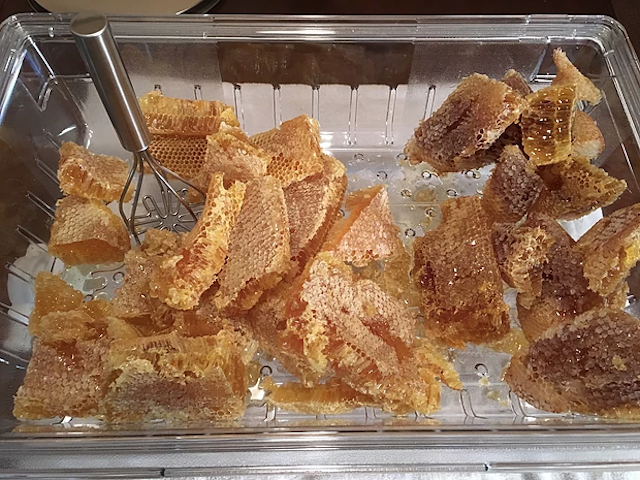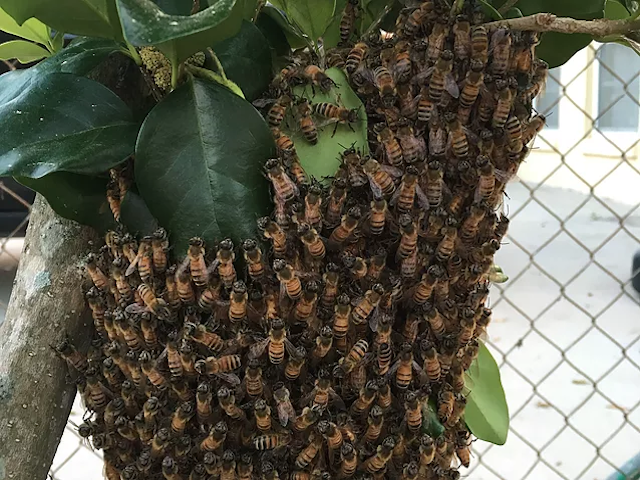
What to do if I find a Bee Hive
Bees have many benefits that they bring to the environment, not to mention providing up to 1/3 of our food supply. Therefore, it is important to call a Professional Bee Keeper that can safely perform bee removal. Calling a pest control company will result in extermination of the bees and the hive. So when you run across a bee hive that is in a high traffic area for people, please do not attempt to remove it yourself. It is always best to let a trained bee keeper do the job properly. Also, it is important to warn anyone that may reside near the hive. Call or text The Bee Guy for help.
Don’t Kill Bees. . .We Save Them!!! No Kill Bee Removal
ALWAYS CALL A PROFESSIONAL FOR HONEY BEE REMOVAL!
Orlando Bee Removal Expert LLC call 407-330-8542
We utilize the latest tools and technology to locate the bees while doing the least amount of damage to your property. For example, we use a FLIR thermal imaging camera to look inside the walls, usually locating the bees very quickly!
Don’t Kill Bees !!!
Something important to know is if you kill the bees there will be honey, wax, and hive remnants left behind. Leaving dead bees in your wall, ceiling, or floor will create a rancid odor as they decompose. When the bees are dead or in a weakened state, the Small Hive Beetle, which is very hard to kill, lays millions of eggs on the comb and dead bees. These eggs hatch into maggots which also causes the honey in the comb to ferment producing a sour smell which will permeate the house and last for weeks to months. The fermenting honey then runs down the walls, ruining drywall, and staining ceilings. The maggots become so numerous they actually boil over dropping out of walls trying to find their way outside. The comb must be removed! Sealing a colony in that is infested with hive beetles, will force them into your home. Not trying to scare you, just telling you what the exterminators won’t. I can show you pictures of what happens if you want….
We will remove everything including the bees, comb, eggs, larva, and any dead bees for you. Doing this will insure that bees do not return, as well as any other pest. We will do our best to not harm the bees when removing them, and then we take them to a rehab bee yard where we will give them a European queen and monitor them to make sure they are healthy. If they survive the first year we will move them to a working bee yard where they can pollinate and produce honey. Bees pollinate lots of our crops, and they are very important to the environment.
WARNING: Attempting to remove honey bees without proper equipment and experience is VERY dangerous! We are State Registered and Insured.
Some Facts About Honey Bees:
Common places bees like to nest:
Exterior walls, concrete block walls, electric meters, water meters, roofs, soffits, gutters, drains, pipes, trees, branches, limbs, debris, between floors, mailboxes, recycle bins, flower pots, trash cans, under sheds, under mobile homes.
Bees will form a cluster on the outside, and given time make their way into these places. It takes only 24hrs for the honeybees to start making their wax. Honeybee nests and hives often go unnoticed for months before they are discovered. In these cases other pests become attracted to the smell of the honey such as wax moth, small hive beetle(SHB), roaches, ants, and even mice or rats. Honeybees can swarm up to 4 or 5 times a year moving to a new place nearby as the original hive continues to live. Migrating swarms will find a vacant honey bee nests and it will be re-colonized. The wax that was built along with the sweet smelling honey attracts the bees to move in.
Don’t Spray The Bees!
Household sprays do not work effectively; common sprays only arouse the honeybees sending them in to defense mode where they could potentially attack. African bees (AHB) will do exactly what European (EHB) bees do, only sooner and in larger numbers.
Do-It-Yourself: I’ve seen where yellow foam was used in attempt to seal the bees in causing even more problems. Sometimes it works and runs all the bees into the house or out some other opening. When it doesn’t work it becomes more of an obstacle when the beekeeper comes to try and remove them. Whether or not pesticides are used it is always necessary to remove all the honey so migrating bees don’t move back in later. Specialized tools are required. Not recommended for the do-it-yourselfer!
Date
February 17, 2016




